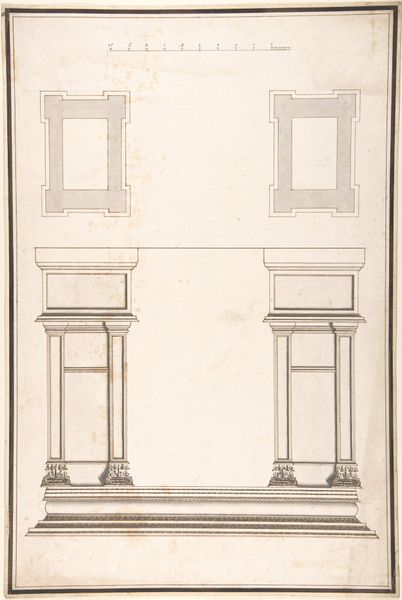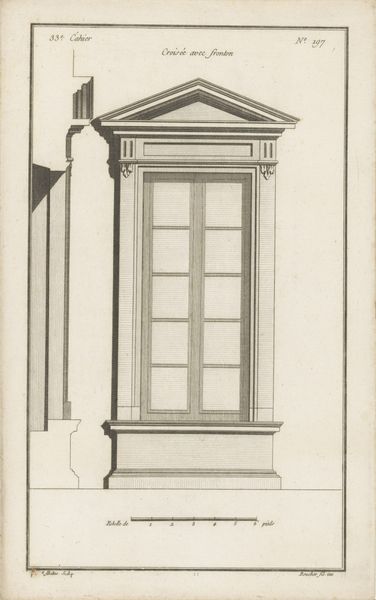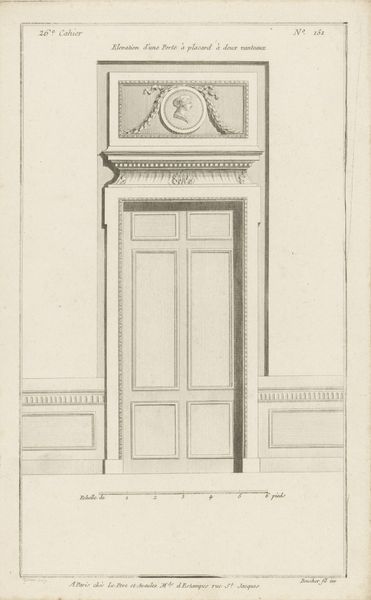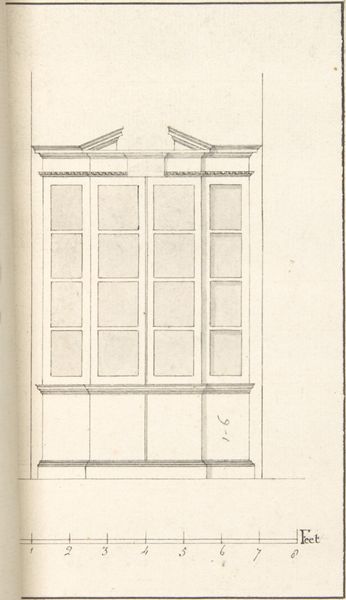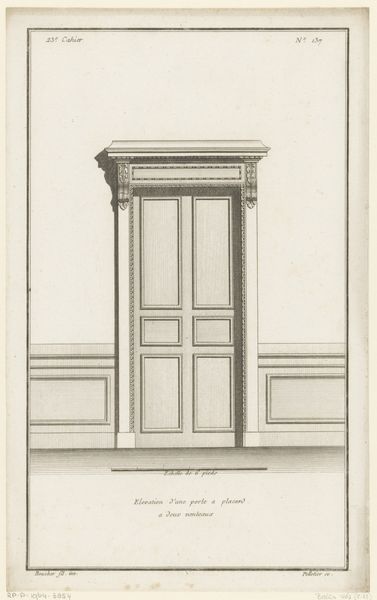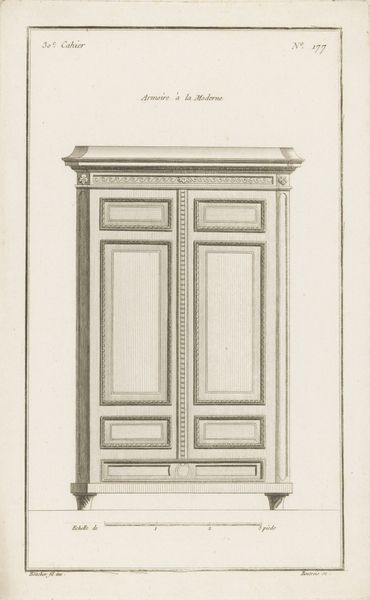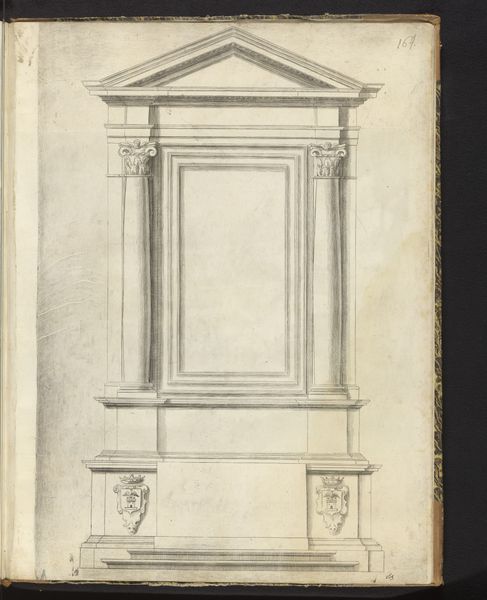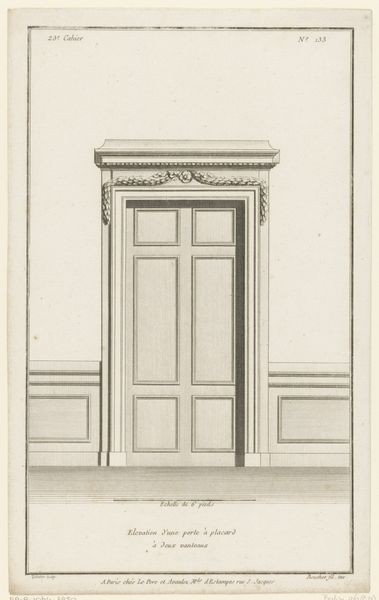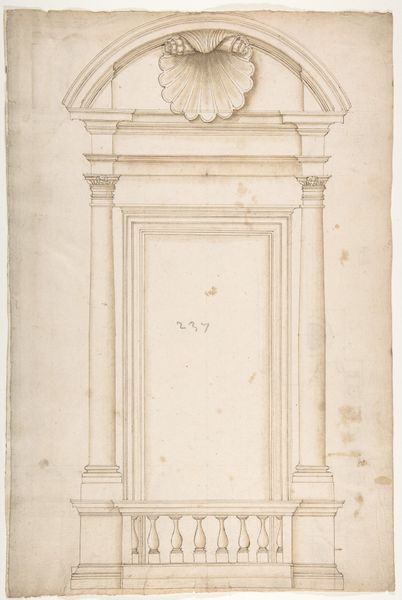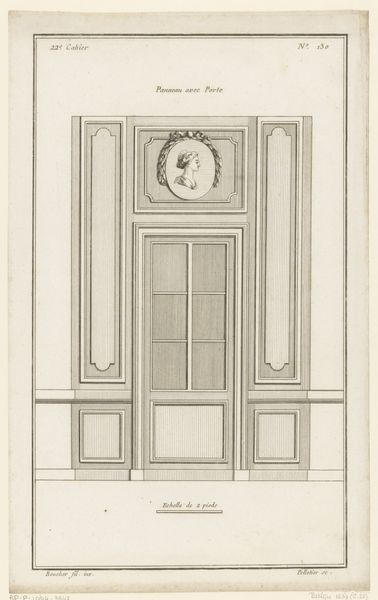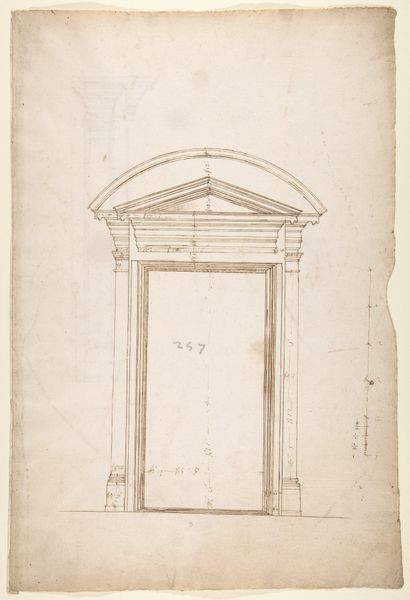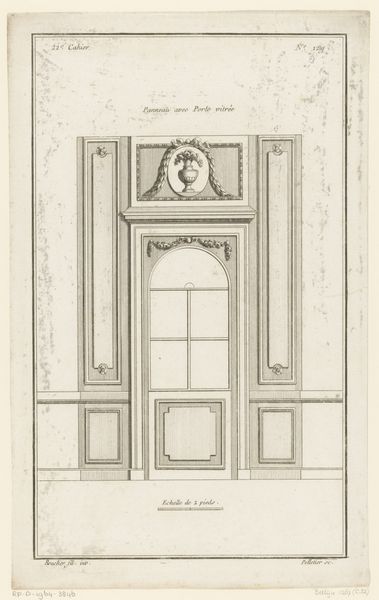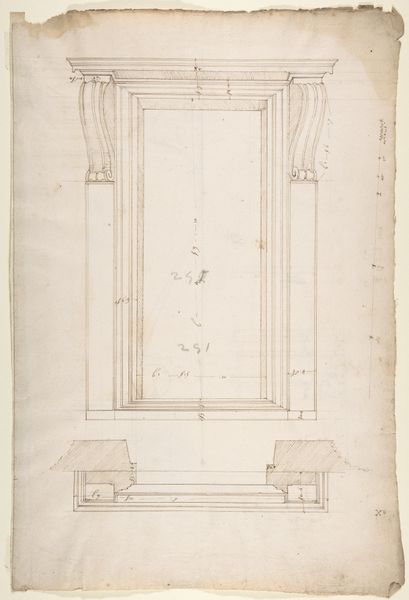
Unidentified, portal, elevation; portal, cornice, profile; fireplace, elevation (recto) blank (verso) 1500 - 1560
0:00
0:00
drawing, print, architecture
#
photo of handprinted image
#
drawing
#
aged paper
#
toned paper
#
muted colour palette
#
ink paper printed
# print
#
light earthy tone
#
white palette
#
tea stained
#
nude colour palette
#
arch
#
watercolor
#
architecture
Dimensions: sheet: 16 3/4 x 11 7/16 in. (42.5 x 29 cm)
Copyright: Public Domain
Editor: This is a print entitled "Unidentified, portal, elevation; portal, cornice, profile; fireplace, elevation" made sometime between 1500 and 1560, by an anonymous artist. It looks like a technical drawing, maybe for a building design, and the aged paper gives it such an interesting presence. How would you interpret a piece like this? Curator: Well, looking at it as a cultural object, this print offers insight into the architectural aspirations of its time. It suggests a growing emphasis on the individual and domesticity. Notice the fireplace and portal details. Were these elements typically accessible to the wider populace, or symbols of elite status? Editor: I hadn't thought about who this kind of design would have been *for.* Was architecture in the 16th century typically driven by wealthy patrons? Curator: Absolutely. Architecture during that period was heavily reliant on patronage. Churches, palaces, and villas reflected the power and taste of their commissioners. Prints like these allowed for the dissemination of design ideas, influencing trends and shaping the built environment, particularly amongst wealthy landowners eager to demonstrate sophistication and status. Does the precision of the lines suggest anything about the intended audience? Editor: That makes a lot of sense. I suppose the precision would appeal to someone concerned with accuracy in construction, like a builder or a wealthy client overseeing the project. It's interesting how a simple drawing can reveal so much about social structures and the economics of art. Curator: Precisely! These kinds of images served to reinforce existing power dynamics, and disseminate certain aesthetic values linked to high social standing. What I’m wondering is, how have images of ideal home designs altered or remained consistent over time in terms of these underlying power structures? Editor: I guess the "dream home" continues to signal a certain status today. That’s a great point to consider. Thanks for opening my eyes to all these contexts.
Comments
No comments
Be the first to comment and join the conversation on the ultimate creative platform.

